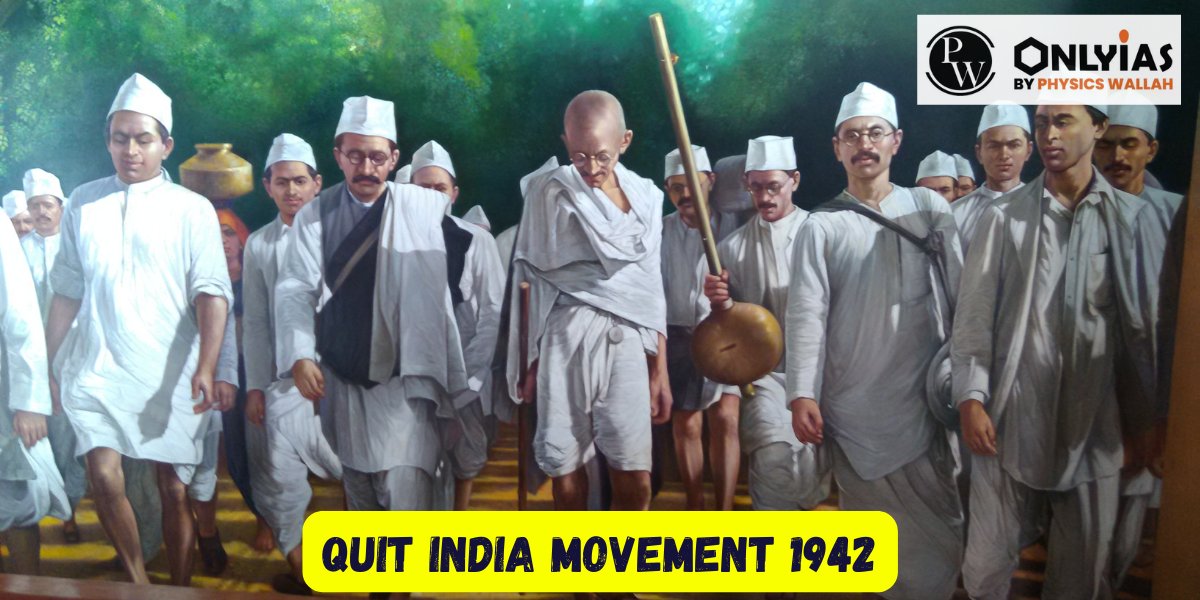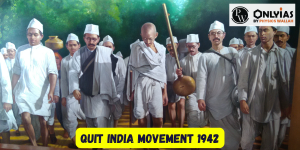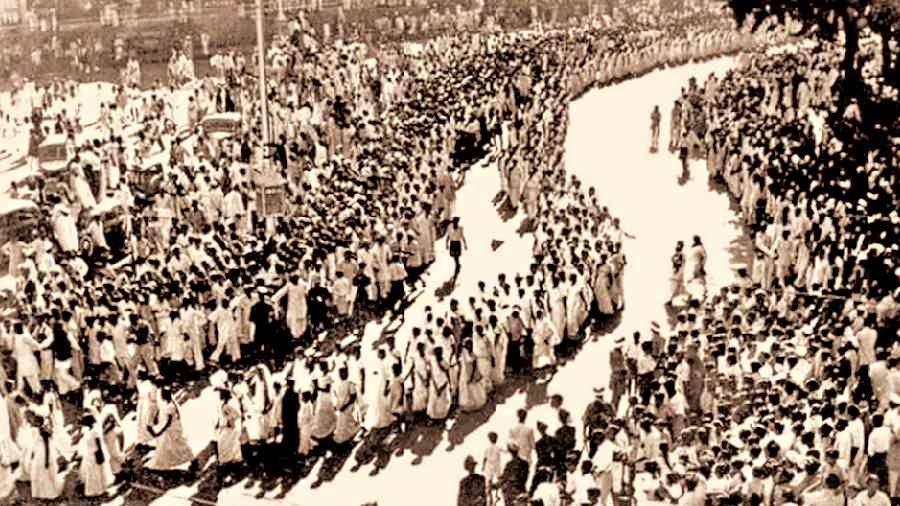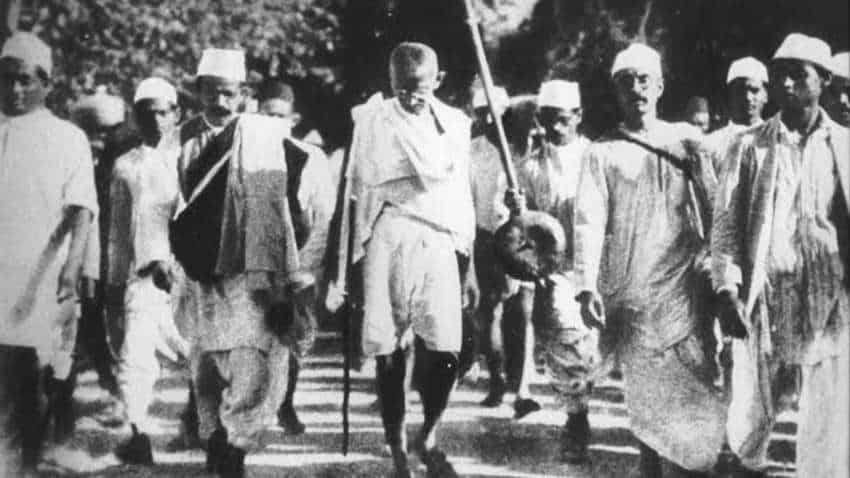
The Quit India Movement, also known as the August Movement or Bharat Chhodo Andolan, stands as a significant chapter in India’s journey towards independence from British colonial rule. Launched on August 8, 1942, this mass protest played a pivotal role in shaping the course of India’s fight for freedom and its eventual attainment in 1947. The movement marked a turning point in India’s struggle, showcasing the determination, unity, and sacrifice of the Indian people in their pursuit of self-governance.

The Quit India Movement, also recognized as the August Kranti Movement, commenced on August 8, 1942, during the session of the All India Congress Committee held in Bombay.
During the assembly of the All-India Congress Committee in Mumbai, Mahatma Gandhi put forth a demand for the termination of British rule, initiating the Quit India Movement. Delivering his speech at the Gowalia Tank Maidan, now known as August Kranti Maidan, Gandhi implored the audience to embrace the sentiment of “Do or Die.”
At the Gowalia Tank Maidan in Mumbai, Aruna Asaf Ali, renowned as the “Grand Old Lady” of the Independence Movement, unfurled the Indian flag as a symbol of the Quit India Movement. The phrase “Quit India” is attributed to Yusuf Meherally, a socialist and trade unionist who held the position of Mayor of Mumbai.
By the early 1940s, India had already witnessed several waves of resistance against British rule, including the Non-Cooperation Movement and the Civil Disobedience Movement. The failure of these earlier movements, coupled with the exigencies of World War II, created a climate of discontent, making the Quit India Movement an inevitable consequence.
The British government’s decision to drag India into the war without consulting its people, along with growing economic hardships, fuelled public resentment. The iconic call of “Quit India” was issued by Mahatma Gandhi at the Bombay session of the All India Congress Committee on August 8, 1942. The intent was to bring a swift end to British rule and facilitate a united and independent India.

The Quit India Movement, also known as the August Movement or Bharat Chhodo Andolan, was a significant event in India’s struggle for independence from British colonial rule. It was launched on August 8, 1942, during World War II. The movement aimed to demand an immediate end to British rule in India. Several factors contributed to the emergence of the Quit India Movement:
The Quit India Movement led to widespread protests, strikes, and acts of civil disobedience across the country. The British responded with severe repression, including mass arrests of leaders and activists. Despite the movement’s suppression, it marked a turning point in India’s struggle for independence and showcased the unity and determination of the Indian people to achieve self-rule.
The Quit India Movement demanded an immediate end to British colonial rule, which had persisted for nearly 200 years. It sought to establish a sovereign and democratic nation where Indians could determine their own destiny without foreign interference. The movement also aimed to create a unified front against the British, transcending regional and ideological differences.
Gandhi’s clarion call to “Do or Die” reflected the determination and urgency of the movement. While nonviolent resistance remained central to the approach, the struggle was marked by instances of civil disobedience, strikes, protests, and even violent clashes with authorities.
The British government responded to the Quit India Movement with brutal repression. The leaders of the Indian National Congress, including Mahatma Gandhi, Jawaharlal Nehru, and Sardar Patel, were arrested and imprisoned. Communications were curtailed, and an atmosphere of fear was deliberately created to quell the uprising. However, the arrests of the leaders didn’t deter the masses, who continued to protest and resist despite the harsh measures.
The Quit India Movement witnessed the active participation of people from all walks of life, including students, workers, farmers, and women. The struggle transcended social and economic divisions, demonstrating the unity of purpose among Indians in their pursuit of freedom. Ordinary citizens became local leaders, organizing protests, strikes, and acts of civil disobedience.
The movement also highlighted the resilience and sacrifice of the Indian people. Instances of individuals facing arrests, beatings, and even death were common. These sacrifices galvanized public sentiment and attracted international attention to India’s struggle for independence.

The Quit India Movement, also known as the August Movement, was a significant civil disobedience movement launched by the Indian National Congress under the leadership of Mahatma Gandhi on August 8, 1942. The primary goal of the movement was to demand an end to British colonial rule in India. The movement resulted in several outcomes and impacts:
In conclusion, the Quit India Movement had a profound impact on India’s fight for independence and set the stage for subsequent developments that eventually led to the end of British colonial rule in 1947.
While the Quit India Movement did not result in an immediate end to British rule, it left an indelible mark on India’s fight for freedom. The movement showcased the strength of the Indian people’s resolve and their unwavering commitment to self-governance. The British government’s use of force to suppress the movement garnered criticism both domestically and internationally, further eroding support for colonial rule.
The Quit India Movement also played a role in changing the dynamics of the post-war world. The economic and political exhaustion caused by World War II pushed the British government to reevaluate its stance on colonialism. The movement, along with other factors, contributed to the eventual granting of independence to India in 1947.
The Quit India Movement remains a symbol of India’s struggle for freedom, unity, and sacrifice. It showcased the unbreakable spirit of the Indian people in their fight against colonial oppression and highlighted the power of nonviolent resistance. The movement’s legacy continues to inspire generations, reminding us that determination and collective action can bring about transformative change, even in the face of seemingly insurmountable odds.
<div class="new-fform">
</div>
